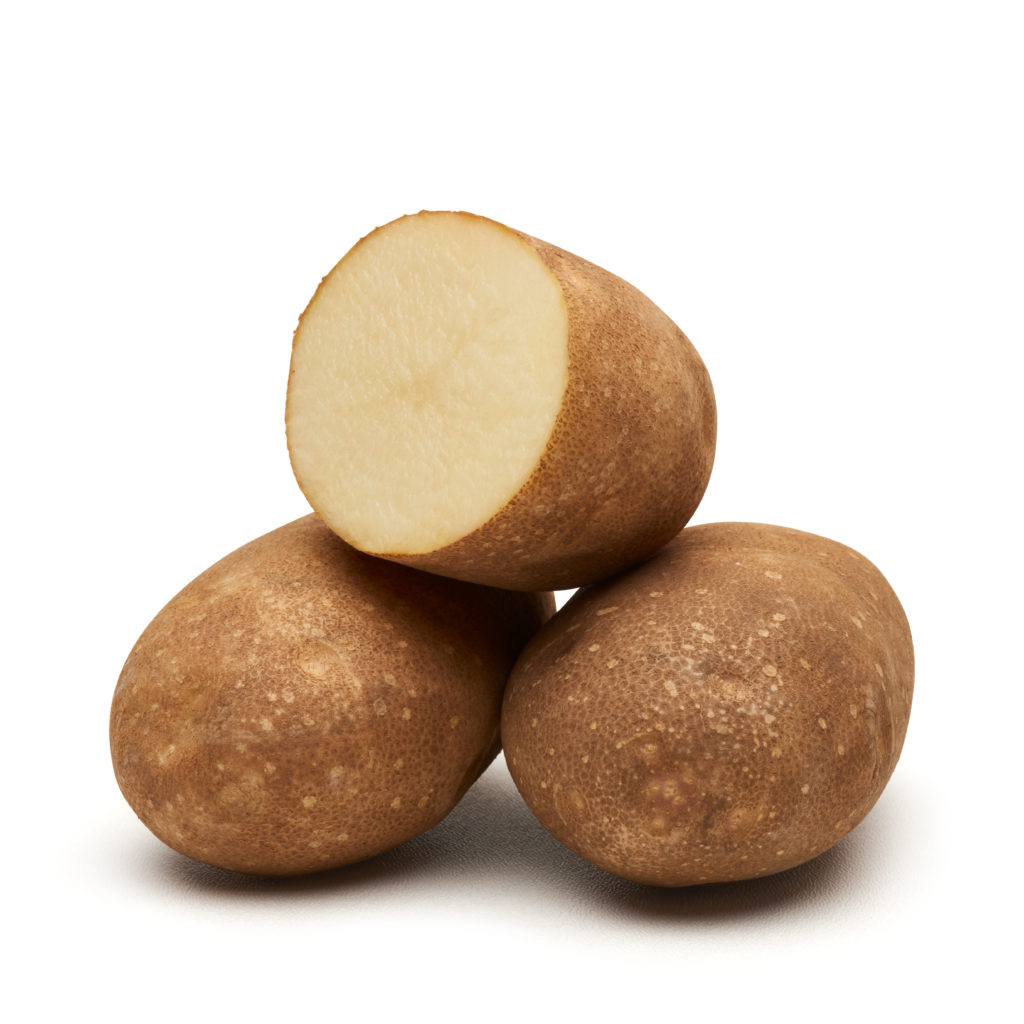
Cultivar Corner: La Belle Russet similar to Burbank, Norkotah with some notable exceptions
La Belle Russet Overview
Parentage: A99031-1TE x A96013-2
Developer: Northwest Potato Variety Development Program
Plant Variety Protection: Applied for in 2019
Strengths: La Belle Russet is an early maturing, dual-purpose variety with wide adaptability and long tuber dormancy.
Morphological Characteristics
Plant: La Belle Russet has a semi-erect, medium-sized vine that matures early.
Tubers: Oblong-long tubers with tan, russet skin. La Belle Russet tubers have an intermediate number of eyes with shallow depth, which are predominantly apically distributed. Tuber set is medium-low and average tuber size is medium.
Agronomic Characteristics
Maturity: Early season
Tubers: La Belle Russet produces tubers with moderate specific gravity, and a relatively high percentage of No. 1 tubers, and tubers >12 ounces. La Belle russets can maintain acceptable fry color for about 180-200 days in storage at 48F, indicating some potential for processing out of short to medium-term storage.
Yield Potential: Medium
Specific Gravity: Average for processing
Culinary Quality: Excellent
Diseases/Physiological Disorders: Response of La Belle Russet to most diseases is similar to that of Burbank and Norkotah, with notable exceptions being moderate resistance to tuber necrosis associated with potato mop-top virus, and a greater susceptibility to potato leafroll virus (PLRV) net necrosis and dry rot (F. sambucinum), relative to Norkotah.
Incentives for Production: La Belle Russet is an early variety notable for its very attractive, smooth tubers and resistances to internal and external defects with a high percentage of U.S. No. 1 tubers. It maintains acceptable reducing sugar concentrations and fry quality directly from the field and when stored at up to nine months at 48 F. La Belle’s high early-season U.S. No. 1 yields — coupled with excellent culinary and nutritional qualities — make it an excellent candidate for fresh market production.
Management
Fertility: La Belle Russet’s nutrient requirements are about 190-210 lb. N/acre for a 400 cwt/acre yield, which is about 80-90% of Burbank’s N requirement. One-third to one-half of the seasonal N requirement should be applied at or near planting with the remainder applied by early August to facilitate early skin maturation.
Planting: Optimal seed piece spacing in 36-inch wide rows in southeast Idaho is 10-11 inches, planted at a depth of 5-7 inches with 2-3 inches of soil applied at final hilling to minimize tuber greening.
Storage
- Long tuber dormancy — 160 days at 45F and 145 days at 48F; Burbank in the same study was 158 days at 45F and 143 days at 48F
- Cure at 55F, then ramp to storage temp.
- Mild to moderate mottling.
- Moderately susceptible to dry rot, similar to Russet Burbank.
Availability
Visit www.pvmi.org for a list of seed growers in the U.S. In Canada, an exclusive agreement with Pommes de Terre Laurentiennes is currently being organized. Check with Ginette Cardinal for seed availability ([email protected]).







